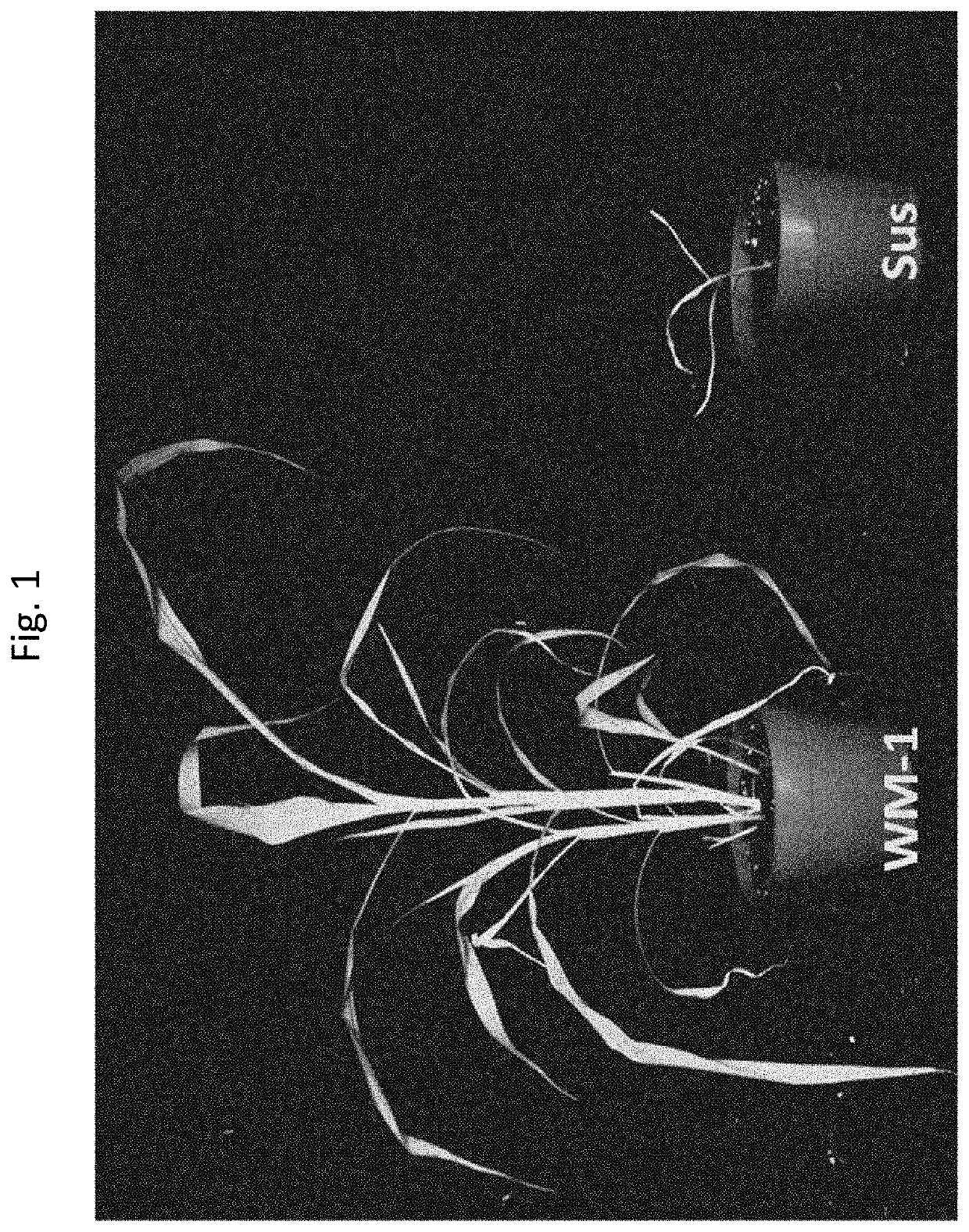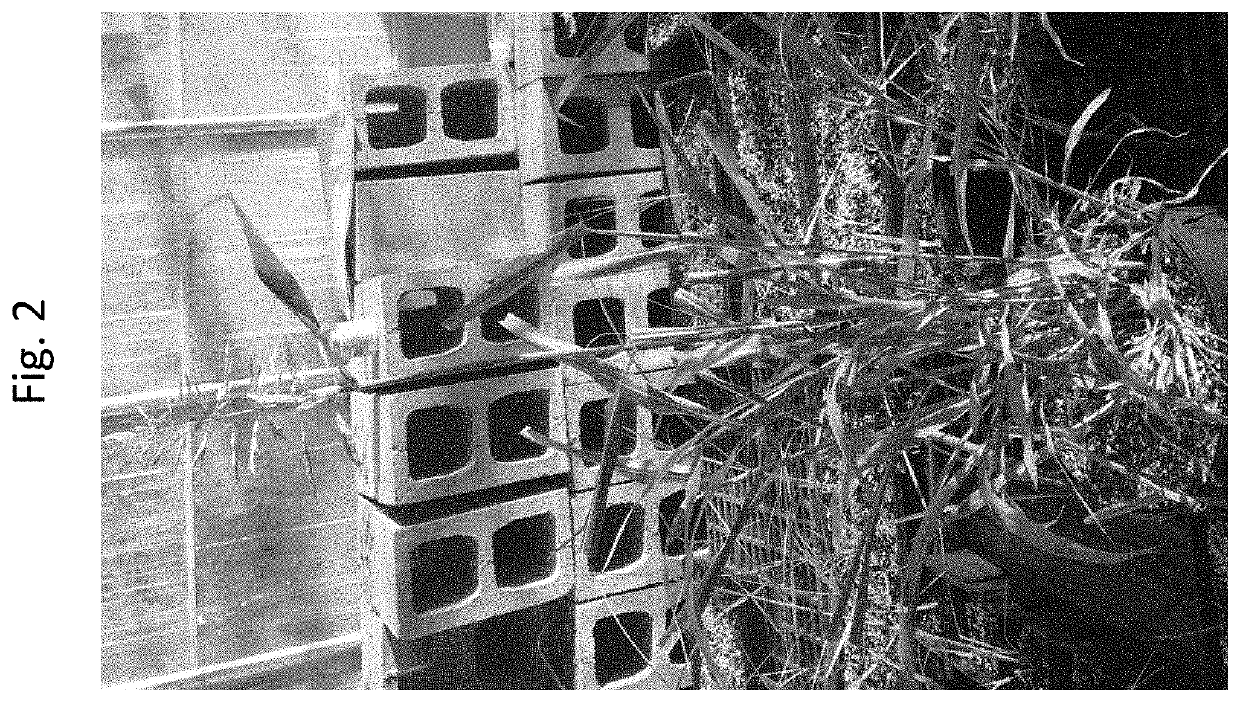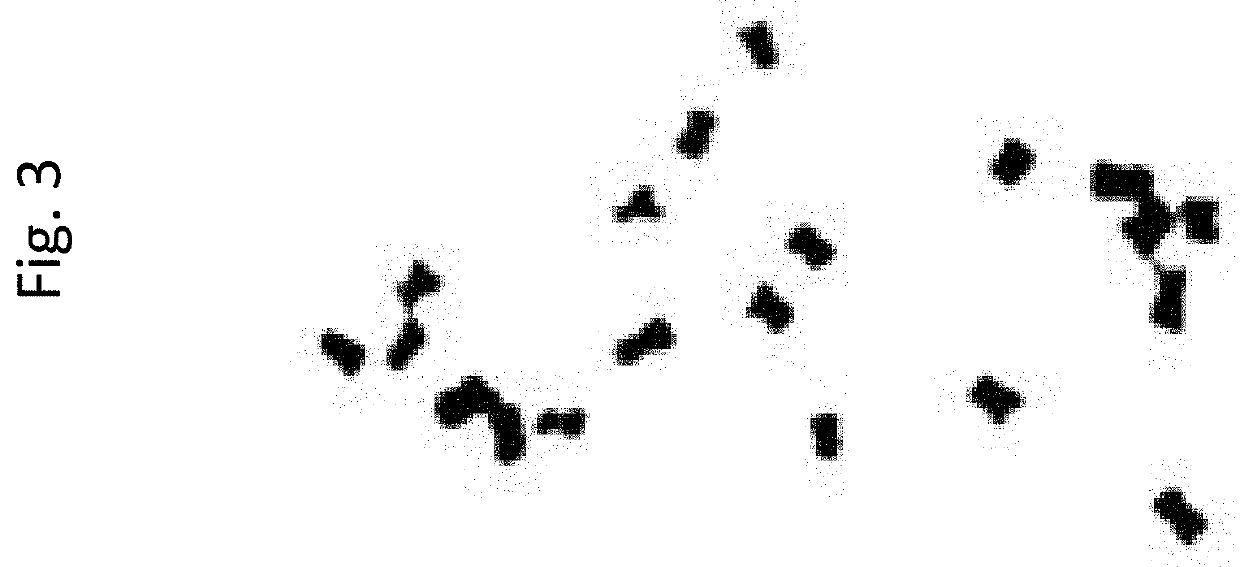Herbicide-Resistant Grain Sorghum
- Summary
- Abstract
- Description
- Claims
- Application Information
AI Technical Summary
Benefits of technology
Problems solved by technology
Method used
Image
Examples
example 1
nt of a Fluazifop-Resistant Grain Sorghum Breeding Line
[0083]The following Example describes the development of a novel grain sorghum breeding line that has tolerance to the ACCase-inhibiting herbicide fluazifop, i.e., the active ingredient in the herbicide Fusilade®.
Transfer of a Fluazifop-Resistance Trait into Sorghum
[0084]A fluazifop-resistant johnsongrass population collected near West Memphis, Ark. (referred to as “WM”) was utilized for transferring the resistance trait to grain sorghum. Fluazifop was applied at a 4× field rate (1×=6 oz / A of Fusilade) to the johnsongrass, and ten highly surviving individuals were selected from the F2 generation of the WM population and were transferred to Texas. One of the three most tolerant individuals (WM-1) was selected for subsequent use. Dose-response assays revealed that the WM population exhibited >30-fold resistance to the fluazifop-p-butyl herbicide Fusilade® compared to a susceptible standard (FIG. 1). A target-site mutation in the ...
example 2
ization of the Fluazifop-Resistant Grain Sorghum Breeding Line Under Greenhouse Conditions
[0093]The following Example describes experiments that were performed to evaluate the grain sorghum line disclosed herein under greenhouse conditions. Specifically, the fluazifop-resistant sorghum was tested to (1) determine its response to various doses of fluazifop at various growth stages, (2) assess whether it has cross-resistance to other ACCase-inhibiting herbicides, and (3) identity the target-site mutations that confer its fluazifop resistance.
Plant Material
[0094]The cultivar DKS 45-23 (Dekalb, Bayer, USA) was used as an ACCase-susceptible grain sorghum standard. Selection 18PR-308 was utilized as the ACCase-resistant grain sorghum line in this experiment.
Herbicide Dose-Response Assays
[0095]Experimental setup: Herbicide dose-response assays were conducted in a greenhouse located in Fayetteville, Ark. in 2019. Approximately 3 seeds were placed in 10 cm-diameter pots filled with a mixture...
example 3
ization of the Fluazifop-Resistant Grain Sorghum Breeding Line Under Field Conditions
[0111]The following Example describes experiments that were performed to evaluate the grain sorghum line disclosed herein under field conditions. Specifically, the fluazifop-resistant sorghum was tested to (1) assess cross-resistance to other ACCase-inhibiting herbicides, and (2) compare the ability of fluazifop-p-butyl to control johnsongrass to that of a standard treatment.
Evaluation of the Tolerance of the Selected Fluazifop-Resistant Grain Sorghum to an Array of ACCase-Inhibiting Herbicides Under Field Conditions
[0112]Standard small-plot research plots were established in spring 2020 on 36-inch wide rows encompassing 4 rows per plot. The various herbicides and rates evaluated are listed in Table 4. Applications were made to 2- to 3-leaf grain sorghum. Crop oil concentrate at 1% v / v was applied in combination with each herbicide. All applications were made at 15 gal / acre and a speed of 3 mph usin...
PUM
 Login to View More
Login to View More Abstract
Description
Claims
Application Information
 Login to View More
Login to View More - R&D
- Intellectual Property
- Life Sciences
- Materials
- Tech Scout
- Unparalleled Data Quality
- Higher Quality Content
- 60% Fewer Hallucinations
Browse by: Latest US Patents, China's latest patents, Technical Efficacy Thesaurus, Application Domain, Technology Topic, Popular Technical Reports.
© 2025 PatSnap. All rights reserved.Legal|Privacy policy|Modern Slavery Act Transparency Statement|Sitemap|About US| Contact US: help@patsnap.com



